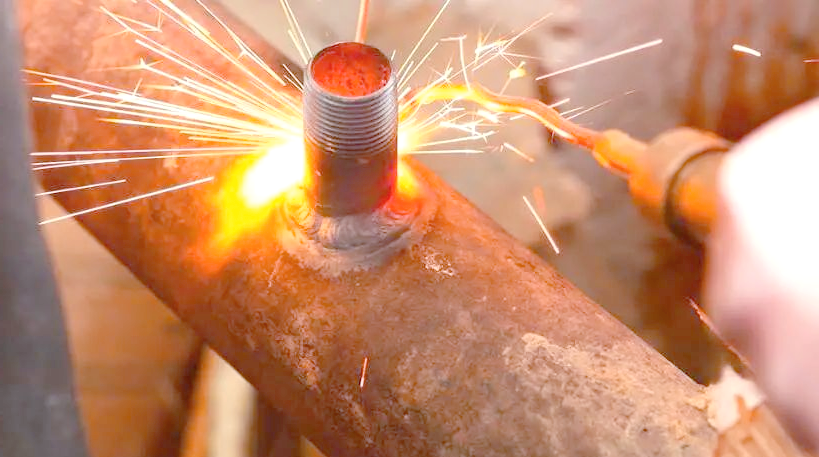Corrosive environments for piping pose a constant threat. For example, it can reduce the performance of materials or lead to leaks and failures. Understanding corrosive environments is essential to ensure you know how to keep your stainless steel pipework e acessórios durable.
What Are Corrosive Environments for Piping? Constant Threats!
The corrosive environment of pipelines describes a variety of conditions that can lead to material degradation. Corrosion is a natural process that transforms metals into more stable forms. Different environments affect metals differently. Understanding the specific corrosive medium is key, which helps in selecting the right stainless steel pipe and fittings.
Key Corrosive Environments for Piping
Low pH accelerates corrosion, and acids attack passive protective coatings. 316 and higher grades of stainless steel are resistant to a wide range of acids. Concentrated acids pose a greater risk.
Elevated temperatures accelerate the rate of corrosion. High temperatures also sensitise stainless steel, which can lead to intergranular corrosion. For this reason, heat resistant stainless steels are preferred wherever possible.
These environments contain high levels of oxygen, which can form a protective oxide layer on the stainless steel. However, certain oxidising acids are highly corrosive. Careful selection of materials remains essential.
These environments lack oxygen. They can strip the passive layer of stainless steel and make the metal brittle. Specific alloys are required for strongly reducing environments.
Corrosive Agents & Their Effects
| Corrosive Agent | Typical Examples | Impact on Stainless Steel Pipe/Fittings |
|---|---|---|
| Chlorides | Seawater, brines, salt solutions | Pitting, Crevice, SCC |
| Sulfuric Acid | Industrial processes, batteries | General corrosion, intergranular |
| Hydrochloric Acid | Chemical cleaning, pickling | Very aggressive general corrosion |
| High Temperatures | Hot gases, steam, hot fluids | Oxidation, Sensitization (IGC), Creep |
| Oxygen | Aerated water, air exposure | Pitting (if localized), oxidation |
| Sulfides | H2S gas, sour crude oil | Sulfidation, stress cracking |
O que fazemos
Stainless Steel Grades for Corrosive Environments
| Stainless Steel Grade | Key Feature | Suitable for Corrosive Environments? |
|---|---|---|
| 304/304L | General purpose, good welding | Mild environments, many oxidizing acids |
| 316/316L | Molybdenum added, better welding | Chlorides, sulfuric acid (some), marine |
| 316Ti | Titanium stabilized 316 | High-temp welds, improved IGC resistance |
| Duplex (e.g., 2205) | High strength, pitting resistance | Chlorides, sour gas, higher pressure |
| Super Duplex (e.g., 2507) | Higher Cr/Mo/N, excellent PR | Severe chlorides, aggressive acids, offshore |
| Liga 20 | High Ni/Cr/Mo/Cu | Sulfuric acid, mixed acids, SCC resistance |
| Hastelloy C22/C276 | Ni-Cr-Mo superalloys | Extreme acids, mixed oxidizers/reducers, wet Cl2 |
| Titânio | Excellent corrosion, light | Seawater, strong chlorides, nitric acid |
Mitigating Corrosion in Piping Systems
- Correct Design: Avoiding gaps and water spots and ensuring good drainage can reduce localised corrosion.
- Acabamento da superfície: Smooth polished surfaces are more resistant to corrosion and easier to clean. This is essential for hygienic applications.
- Post-weld Treatment: Clean welds properly. Passivation can restore the protective layer, which can prevent post-weld corrosion.
- Protective Coatings: Apply specialised coatings. These coatings add an extra barrier to reduce the possibility of chemical attack.
- Cathodic protection: Using an electric current. This protects the metal from corrosion. Common in buried pipelines.
- Regular Inspections: Implement a robust inspection programme to detect corrosion early. This can prevent costly failures.
Contate-nos
- RM901 No.22 Tangjiaqiao Road Wenzhou China
- +86 577 8551 1171
- [email protected]
- https://www.kaysuns.com/



